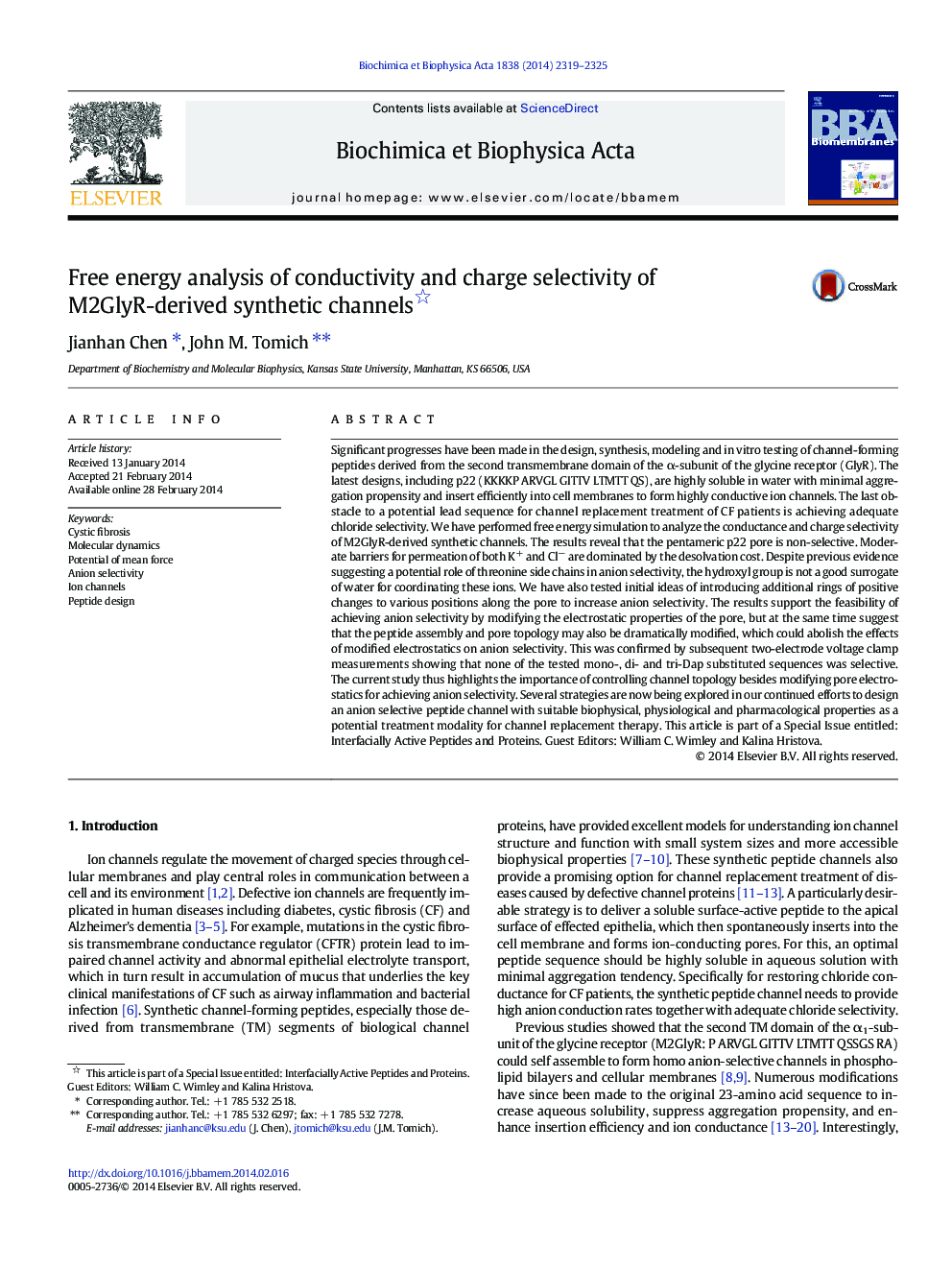| کد مقاله | کد نشریه | سال انتشار | مقاله انگلیسی | نسخه تمام متن |
|---|---|---|---|---|
| 1944191 | 1053188 | 2014 | 7 صفحه PDF | دانلود رایگان |

• Synthetic peptide channels need to achieve sufficient conductivity and anion selectivity for channel replacement treatment of CF patients.
• Free energy analysis suggests that M2GlyR-derived synthetic channels are charge nonselective.
• Modifying pore electrostatic through strategic placement of positive changes could achieve anion selectivity.
• Achieving anion selectivity also requires maintaining of proper channel topology during charge modification.
Significant progresses have been made in the design, synthesis, modeling and in vitro testing of channel-forming peptides derived from the second transmembrane domain of the α-subunit of the glycine receptor (GlyR). The latest designs, including p22 (KKKKP ARVGL GITTV LTMTT QS), are highly soluble in water with minimal aggregation propensity and insert efficiently into cell membranes to form highly conductive ion channels. The last obstacle to a potential lead sequence for channel replacement treatment of CF patients is achieving adequate chloride selectivity. We have performed free energy simulation to analyze the conductance and charge selectivity of M2GlyR-derived synthetic channels. The results reveal that the pentameric p22 pore is non-selective. Moderate barriers for permeation of both K+ and Cl− are dominated by the desolvation cost. Despite previous evidence suggesting a potential role of threonine side chains in anion selectivity, the hydroxyl group is not a good surrogate of water for coordinating these ions. We have also tested initial ideas of introducing additional rings of positive changes to various positions along the pore to increase anion selectivity. The results support the feasibility of achieving anion selectivity by modifying the electrostatic properties of the pore, but at the same time suggest that the peptide assembly and pore topology may also be dramatically modified, which could abolish the effects of modified electrostatics on anion selectivity. This was confirmed by subsequent two-electrode voltage clamp measurements showing that none of the tested mono-, di- and tri-Dap substituted sequences was selective. The current study thus highlights the importance of controlling channel topology besides modifying pore electrostatics for achieving anion selectivity. Several strategies are now being explored in our continued efforts to design an anion selective peptide channel with suitable biophysical, physiological and pharmacological properties as a potential treatment modality for channel replacement therapy. This article is part of a Special Issue entitled: Interfacially Active Peptides and Proteins. Guest Editors: William C. Wimley and Kalina Hristova.
Journal: Biochimica et Biophysica Acta (BBA) - Biomembranes - Volume 1838, Issue 9, September 2014, Pages 2319–2325